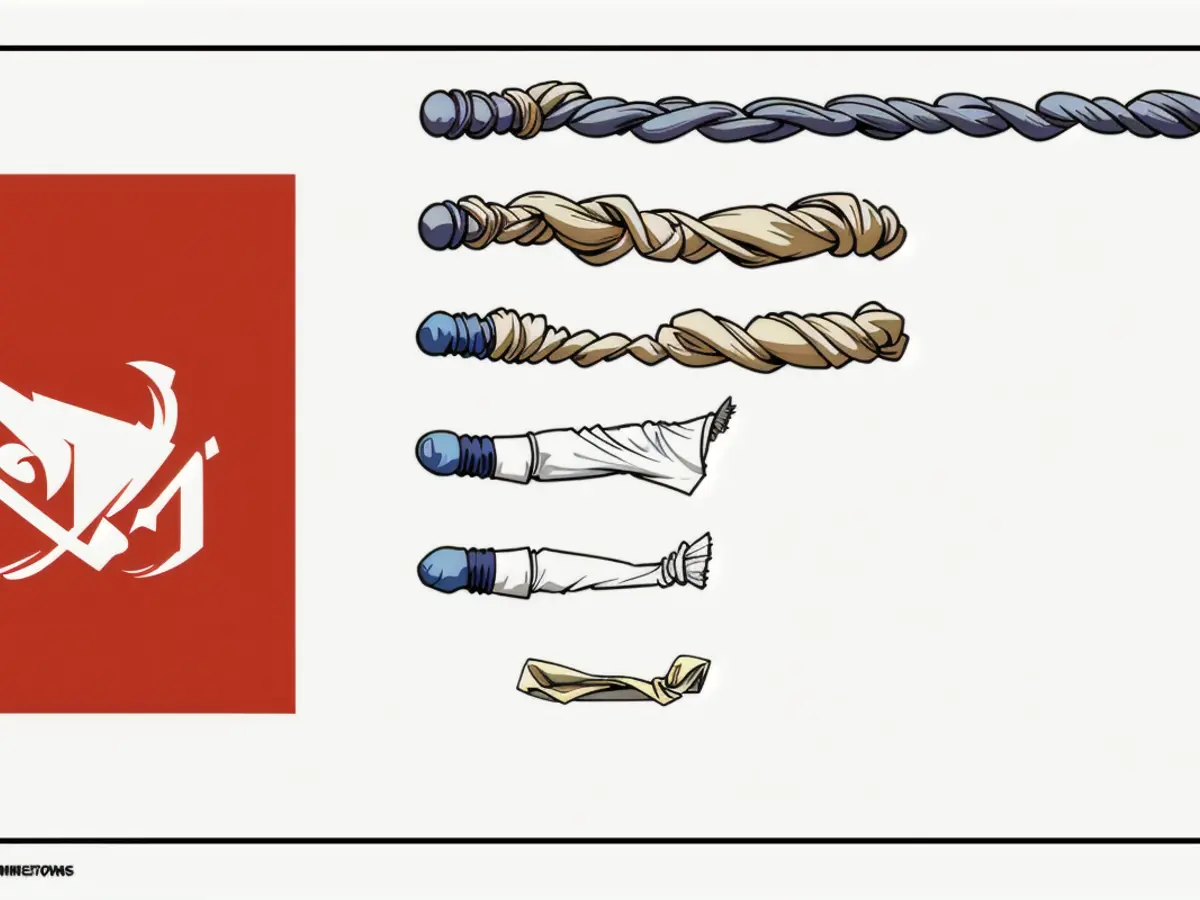Behind Trump's apparent tariff turmoil, there lies a strategic plan.
In a surprising turn of events, President Trump and his economic team have been making contradictory statements about tariffs, leaving American multinational businesses in a state of uncertainty and foreign countries scratching their heads about how to negotiate. This tariff rollercoaster started with Trump slapping massive and punishing import taxes on Canada and Mexico, only to put them on hold for a month in exchange for little concession from the North American neighbors. The Chinese tariffs are in effect, but repealing an exemption on small items caused chaos at the US Postal Service, leading to its temporary reinstatement. Moreover, expect more tariffs on steel and aluminum to be announced on Monday, followed by a potentially expansive reciprocal tariff plan later this week.
And that's just the beginning. Trump has hinted at launching tariffs on the European Union and even promised a wider tariff on all items that enter the United States.
Tariffs, as many avert their attention, serve a crucial role in the economy. The U.S. has historically used tariffs to protect its manufacturing industry, farmers, technology, and national security interests. Administrations, including Trump's first, have typically used a fine-tuned approach to tariffs, often applying them with precision. However, in his second term, Trump is threatening to swing the tariff hammer like a wrecking ball, stating he'll place tariffs on goods that the U.S. doesn't even produce.
Corporate America is outraged by the tariffs, with mainstream economists arguably agreeing that Trump's tariff plan will reignite inflation and slow US economic growth. Even editorial boards of pro-Trump publications like the Wall Street Journal have criticized the tariff plan as "the dumbest trade war in history."
But Trump has his reasoning behind the tariff chaos.
Why Trump Wants Tariffs
Trump has three primary reasons for wanting tariffs: to raise revenue, to bring trade into balance, and to bring rival countries to heel. Each of these reasons can complicate negotiations and business planning, making it difficult to achieve all three simultaneously.
Raising Revenue
America has been running a substantial budget deficit, and Trump believes that tariffs will make up for lost revenue, particularly from his 2017 tax cuts, which he wants to extend and expand. Trump asserts that his tariffs will generate hundreds of billions, possibly trillions, of dollars for the U.S. Treasury.
Balancing Trade
Trump routinely criticizes American trade policy as "subsidizing" foreign countries, arguing that the U.S. loses hundreds of billions of dollars to its neighboring nations. Reciprocal tariffs, as Trump intends to implement, aim to match other countries' tariffs dollar for dollar, with the objective of bringing trade into equilibrium.
Coercing Rival Countries
Trump has utilized tariffs to pressure rival countries to comply with American interests. By imposing punishing tariffs on China and delaying tariffs on Canada and Mexico, Trump aims to deter undocumented immigrants and fentanyl from entering the U.S. The logic is that by inflicting financial pain, countries may be more inclined to address issues that Trump deems detrimental to the U.S.
The problem with this approach is that achieving all three goals can be challenging – and potentially counterproductive. If countries avoid tariffs to please Trump, the revenue-generating goal becomes unattainable. If tariffs are imposed indiscriminately, countries may have little incentive to come to the negotiating table. And if trade needs to be balanced, imposing tariffs often leads to retaliatory actions, escalating trade tensions and inflicting economic harm.
What's Already in Place and What's Next?
In the past week, Trump introduced a 10% tariff on all Chinese imports, on top of existing tariffs. China retaliated by placing tariffs on some chip and metal imports and launching an investigation into Google. However, Trump temporarily paused taxes on any goods worth $800 or less imported into the U.S., allowing time for the Commerce Department to develop a tracking system. Additionally, he postponed 25% across-the-board tariffs on Mexican and Canadian imports until at least March 1.
Trump indicated that he plans to announce a 25% tariff on all steel and aluminum imports on Monday. He also mentioned holding a separate news conference on Tuesday or Wednesday to announce massive new reciprocal tariffs that could potentially target countries like China and India, both large trading partners with significant trade deficits.
The impact of these tariffs on the U.S. economy is unclear. Some economists foresee potential reductions in economic output, increased consumer prices, and job losses, while others predict increased tax revenues. The specific severity of these impacts remains to be seen, depending on factors like the countries targeted, the tariff rates, and the duration of the tariffs.
The ongoing tariff negotiations are causing significant uncertainty in the business world, with American multinational companies struggling to adapt to the changing landscape. These tariffs, as a tool in economic policy, are aimed at raising revenue, balancing trade, and coercing rival countries, but their impacts on the economy are still uncertain. The proposed 25% tariff on all steel and aluminum imports, along with potential reciprocal tariffs, could further complicate matters for businesses.









